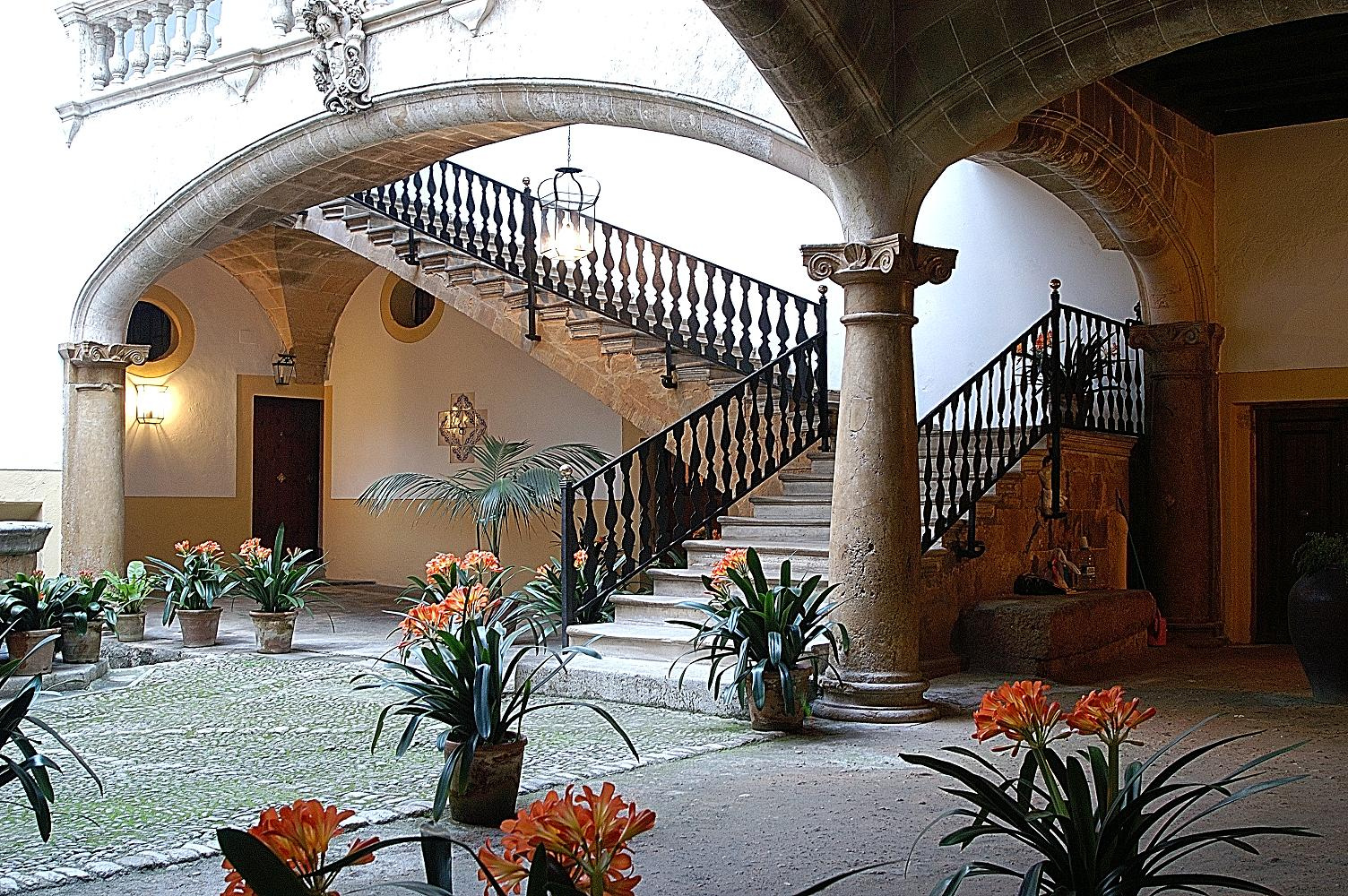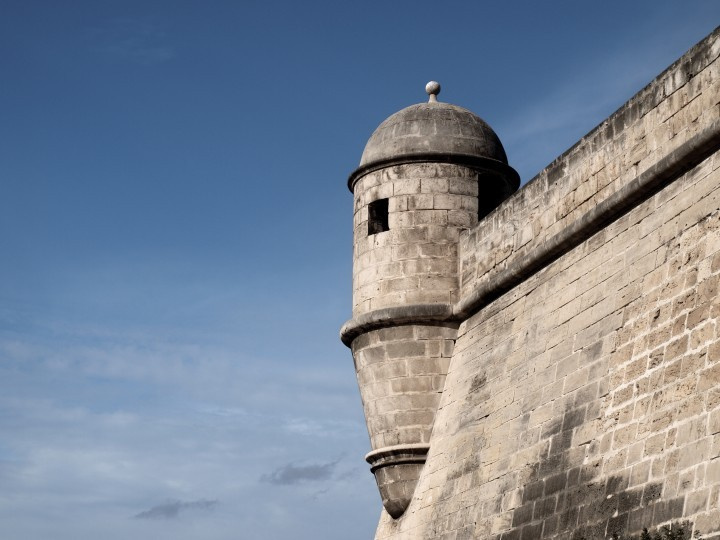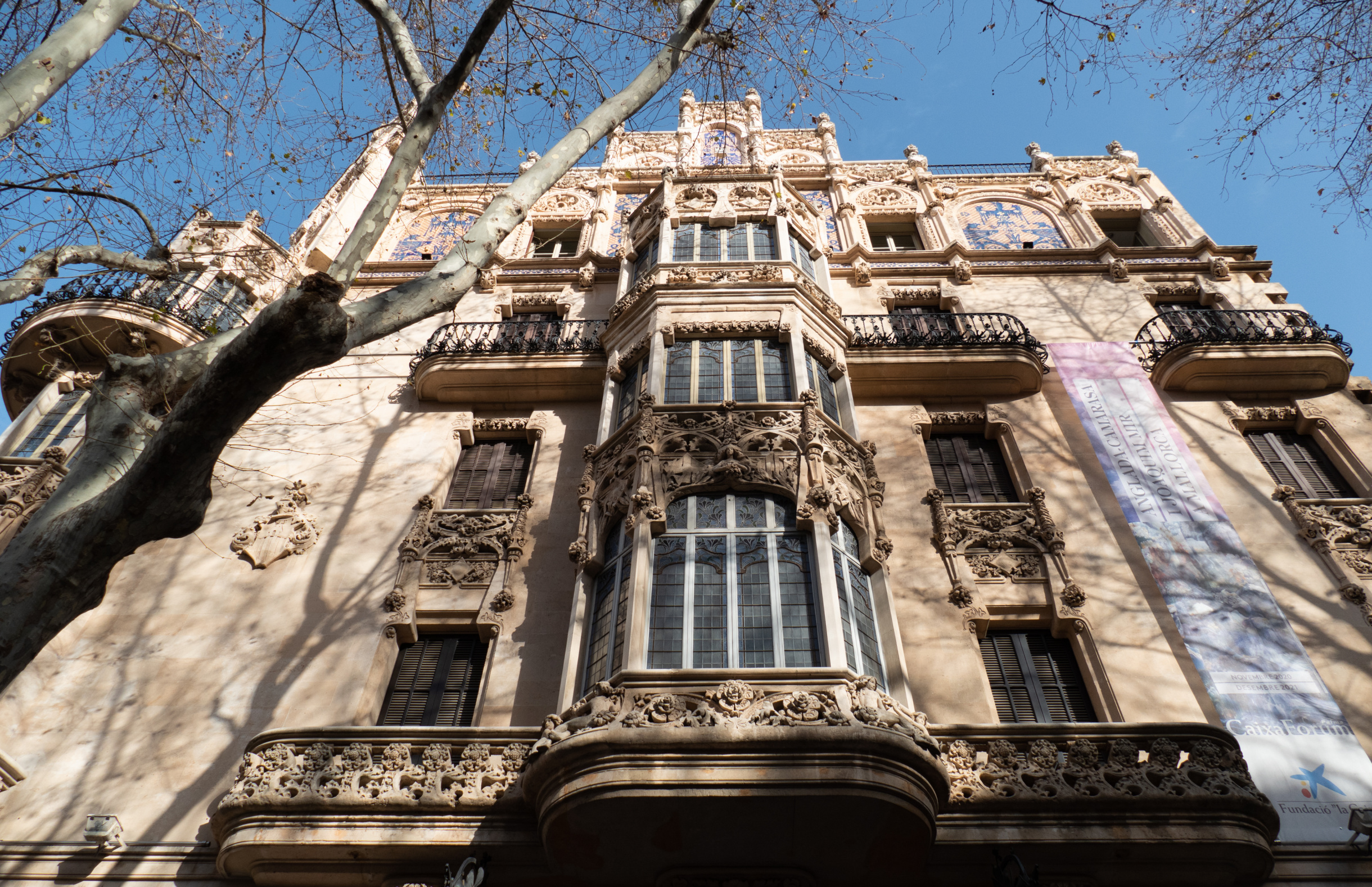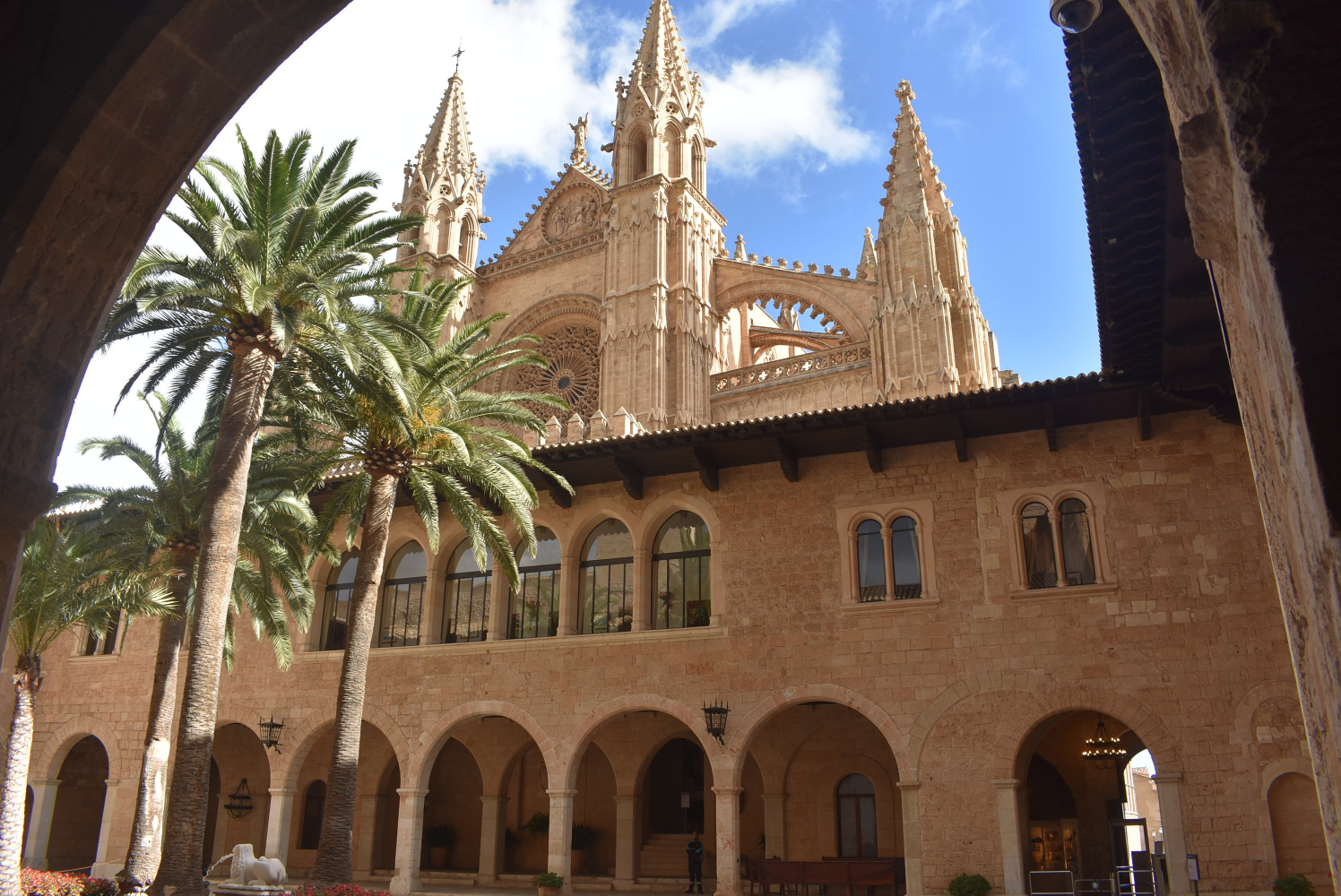Old quarter - Every street, a treasure
The historic centre of Palma is an architectural and cultural marvel. With its medieval streets, it is one of the largest and best preserved old quarters in the Mediterranean and in Europe. Every street and little alleyway is a treasure that conceals open doorways and courtyards belonging to old mansions (the ‘casals’), modernist buildings, emblematic shops, museums and modern art galleries. It is very easy to get lost and it is advisable to do so. And remember, the sea awaits you down below.
Palma Baja
Palma’s old quarter, the area within the city walls, is divided into Palma Alta and Palma Baja. We suggest you start by the sea and make your way up to the Cathedral and the Palace of La Almudaina. We suggest you start at the Baluard de Sant Pere (1), which overlooks the promenade and is the best place to see the old wall that surrounded the city. This space is also home to the Museu d'Art Modern i Contemporani de Palma, with works by Picasso, Barceló and Tápias, among others. From there, we can walk along the Torrent de Sa Riera (2) (which once flowed through the centre of the city) and then enter the old quarter from the Porta de Santa Catalina.
We are now in the old quarter and we can head to the Iglesia de la Anunciación (Annunciation) church (3), where we find Cristo de la Sangre, the most worshipped sculpture on the island and which is carried in procession to the Cathedral every Maundy Thursday. The next stop is a must-see: Casal Balaguer (4), the best preserved courtyard open to the public in Palma. Then we can walk towards Carrer de la Unió (5) (where the Torrent de Sa Riera used to flow) until we get to Plaça del Mercat and Plaça de Weyler, where we are welcomed by modernist gems like the Gran Hotel (6), a modernist building home to the CaixaForum museum and a permanent exhibition of the brilliant painter Anglada Camarasa, and the colourful façade of the Forn des Teatre bakery (7), a delight for the eyes on the outside and a treat for the taste buds inside.
Palma Alta
Up we climb and we head towards the ‘upper’ part of the city. Towards Plaça Major (8), from which two of Palma's main shopping streets emerge: Sant Miquel and Sindicat. A good place to explore the nearby and ‘hidden’ squares of Banc de l’Oli (9), Mercadal (10) or La Quartera (11). A stop at one of the emblematic shops of the city and the island is a must: Can Joan s’Aigo (12), on Carrer de Can Sanç, where we can satisfy our hunger, thirst and curiosity with local delicacies: ice-cream, almond horchata, ensaimadas, cuartos (typical Mallorcan sponges), coca de patata (potato sponge cake)...
The route takes us onto a very narrow street: Can Savellà (13), where some of Palma’s best courtyards are found, such as Can Catllar de Llorer, Can Vivot and Can Juny. From there, we can go to Plaça de Cort (14), where we find the Ajuntament (City Hall) and the “Olivera” de Cort olive tree, a 600-year-old natural wonder with an impossibly twisted trunk that serves as a meeting point for friends and lovers.
Towards the Cathedral
From Plaça de Cort, we head towards Plaça de Santa Eulalia (15), from where we can go to Carrer de Monti-Sion (16), thought to be where the old synagogue in Palma used to be located. We carry on along Carrer de la Portella (17) (which can also be accessed from the Parc de la Mar park), another street packed with historic buildings: Ca la Gran Cristiana (Museum of Mallorca, another mansion open to visitors), Can Pasqual, Can Fontirroig, Can Espanya-Serra, Can Morei-Santmartí, Can Formiguera, Cal Comte d’Espanya, Cal Marqués de la Torre and Can Gordiola.
If we carry on, we reach the Palace of La Almudaina (18), the royal palace in Palma and one of the official residences of the Spanish royal family. Located opposite the Cathedral, it does not detract from it, instead creating a spectacular ensemble: we are talking about one of the architectural and scenic jewels of Palma, which brings together that artistic fusion that defines and makes the city unique. We end the route at the Cathedral of Mallorca (19), spectacular both inside (imposing, bright and elegant thanks to Gaudí; unique and powerful thanks to the mural by Barceló) and outside (see the reflection in the Parc de la Mar (20) down below). This is Palma’s great landmark and an essential and unforgettable visit. You be the judge of whether we are exaggerating.




